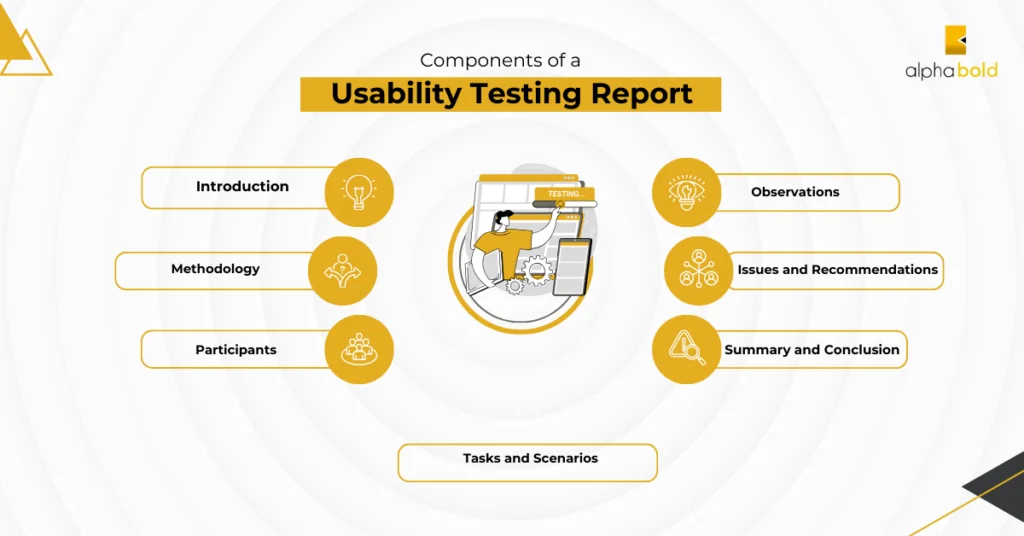Introduction
In an era dominated by digitization, organizations and businesses continually adapt their models to reach consumers online. This shift has become even more pronounced during the recent pandemic. To stay competitive, it is imperative for these entities to not only offer useful products but also ensure they are straightforward and enjoyable to use. This is precisely where usability testing emerges as a pivotal player.
Before delving into the details of the Usability Testing Report, let’s first grasp the essentials:
How is Usability Testing Carried Out?
Usability testing involves observing real users interacting with an application, recording their experiences to uncover areas of confusion and identify opportunities for enhancing the overall user experience. In essence, usability testing is a method for gauging the ease and user-friendliness of a software application. It employs a set of target end users to expose usability defects, evaluating how easily users can interact with the product, ultimately contributing to improved customer satisfaction and retention. About 50% of a developer’s time is reportedly spent on fixing issues that could have been avoided, highlighting the significant impact of usability problems on development costs and time.
For more insights into how usability testing leads can help increase user satisfaction, read our blog: How Usability Testing Leads Toward User Satisfaction.
However, if you’re new to usability testing, consider reading this beginner’s guide by HubSpot.
Components of a Usability Testing Report:

- Introduction
- Briefly outline the project, including its purpose and scope in the context of usability testing.
- Clearly articulate the goals and objectives guiding the testing process.
- Methodology
- Define the testing approach, detailing participant selection criteria, the testing environment, and tasks assigned to users.
- Specify the tools and equipment employed during testing, such as screen recording software, eye-tracking devices, or usability testing platforms.
- Participants
- Introduce participant demographic information, including age, gender, and experience level.
- Prioritize participant confidentiality and secure consent for sharing relevant details in the report.
- Tasks and Scenarios
- Provide a comprehensive description of tasks assigned to participants during usability testing.
- Incorporate scenarios and user stories to contextualize the assigned tasks.
- Observations
- Document observations made during testing, encompassing both quantitative data (success rates, completion times) and qualitative data (user feedback, comments).
- Enhance the report with visual aids such as screenshots or video clips to highlight key moments.
- Issues and Recommendations
- Enumerate identified usability issues, categorizing them by severity.
- Present clear and actionable recommendations for addressing each identified issue.
- Summary and Conclusion
- Summarize the key findings and insights garnered from usability testing.
- Conclude with an emphasis on the significance of these findings in elevating the overall user experience.
Boost Your User Experience Today!
Transform your product's user interface with our professional usability testing services. Dive deeper into your users' needs and enhance your quality assurance strategies for truly intuitive designs.
Request a ConsultationUsability Testing Report Template
Here’s a template you can use as starting point in your usability testing report:
1. Introduction Template
Project Overview
[Brief description of the project]
Goals and Objectives
[List the goals and objectives of the usability testing]
2. Observations Template
Task 1: [Task Description]
Observation
[Record key observations, including user actions and behaviors]
Task 2: [Task Description]
Observation
[Record key observations, including user actions and behaviors]
3. Issues and Recommendations Template
Issue 1: [Description]
Severity: [Low/Medium/High]
Recommendation
[Provide a clear and actionable recommendation for addressing the issue]
Issue 2: [Description]
Severity: [Low/Medium/High]
Recommendation
[Provide a clear and actionable recommendation for addressing the issue]
Example of a Usability Testing Report:
Consider the following example excerpt for a more tangible understanding:
Task 1: Completing the Registration Form
Observation:
– User struggled to locate the registration button, resulting in a delayed start.
– Confusion regarding password requirements led to multiple failed attempts.
Issue 1: Unclear Registration Button Placement
Severity: Medium
Recommendation: Consider placing the registration button prominently on the homepage for easier access.
Issue 2: Ambiguous Password Requirements
Severity: Low
Recommendation: Clarify password requirements with user-friendly tooltips or inline guidance.
In Need of Usability Testing Services?
Unlock the full potential of your QA processes with our expert usability testing. Let's create seamless user experiences together!
Request a ConsultationConclusion
A usability testing report requires a delicate balance of observation, analysis, and clear communication. By adhering to the outlined components and leveraging the provided templates and examples, you can create a report that highlights issues and guides the development team toward meaningful improvements. A well-crafted usability testing report bridges identified problems and effective solutions, ultimately contributing to a superior user experience.
Explore Recent Blog Posts








